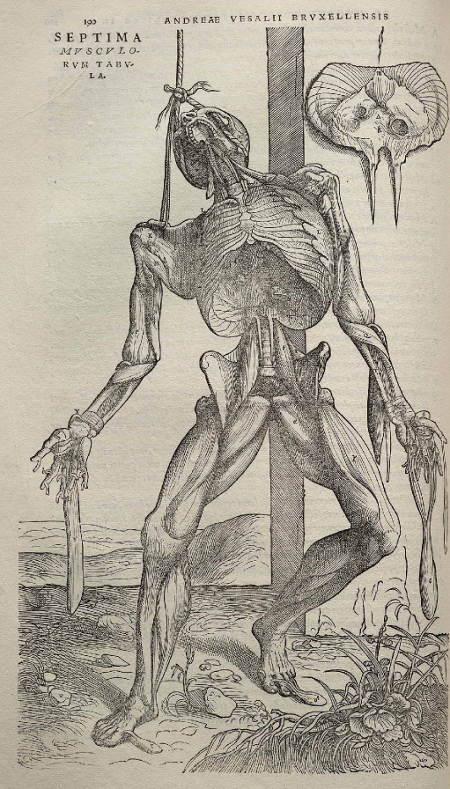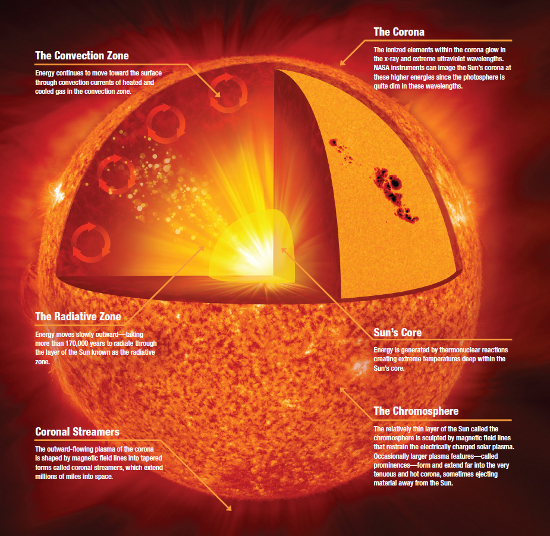The year 1543 witnessed the publication of Copernicus's On the Revolution of the Celestial Spheres, which initiated the so-called "Copernican Revolution" in science. Humans were displaced from their central position in the cosmos. In the same year, however, the Flemish physician Andreas Vesalius published another book: On the Fabric of the Human Body, which may have marked an equally important turning point -- it founded modern anatomical science -- putting humans at center stage in another sense. Dissecting scores of corpses of executed criminals, Vesalius quickly realized that the descriptions of human anatomy that were accepted at his time were often completely wrong. Those descriptions were based on the writings of the revered second century physician Galen.
Vesalius demonstrated that Galen's assertions were largely based on the bodies of dogs and monkeys, rather than on information gathered from the human body. Vesalius accompanied his monumental text (seven volumes) with exquisitely detailed woodcut illustrations drawn by Jan van Calcar, a student of the great painter Titian (Figure 1 shows one of these drawings). Vesalius broke with tradition in two important ways. First, he insisted on performing the dissections by himself, rather than consigning that task to an assistant surgeon. Second, he noted in the preface to his book that Galen's writings contained "many incorrect observations... even regarding his monkeys." Galileo Galilei, who incidentally was born in the same year in which Vesalius died, adopted these two guidelines. First, he noted that "sensate experiences and necessary demonstrations" take precedence "not only over philosophical but also theological dogmas." Second, Galileo highlighted the fact that authority had no role to play in deciding scientific questions.

Figure 1. An illustration from Vesalius's book (from
Wikipedia)."
In the same way that Galileo has put the Copernican revolution on a firmer basis, the second person to have revolutionized physiological thought was the English physician William Harvey (1578–1657; Figure 2). Harvey was, in fact, a student at the University of Padua at the same time that the young Galileo was a professor there.

Figure 2. William Harvey (from Wikipedia).
Harvey's greatest achievement was the demonstration that the heart, arteries and veins were all part of one circulatory system, with the heart at its center. This replaced Galen's complex motion of many intertwined cycles. In this respect, Harvey's discovery (achieved through many experiments and observations) is very reminiscent of the Copernican theory, in which one planetary system, revolving around the Sun, replaced the collection of epicycles in the Ptolemaic astronomy. In the same way that Galileo's observations (in particular of the phases of Venus) demolished Ptolemy's theory, Harvey's observations and pioneering quantitative logic in biology have brought about the demise of the centuries-old Galen doctrine. The revolution in human anatomy was complete.
Today, every time we analyze the detailed structure or interior of something, we speak of its "anatomy." Figure 3, for instance, shows the "anatomy" of the Sun.

Figure 3. "Anatomy" of the Sun. Credit: NASA/Jenny Mottar.